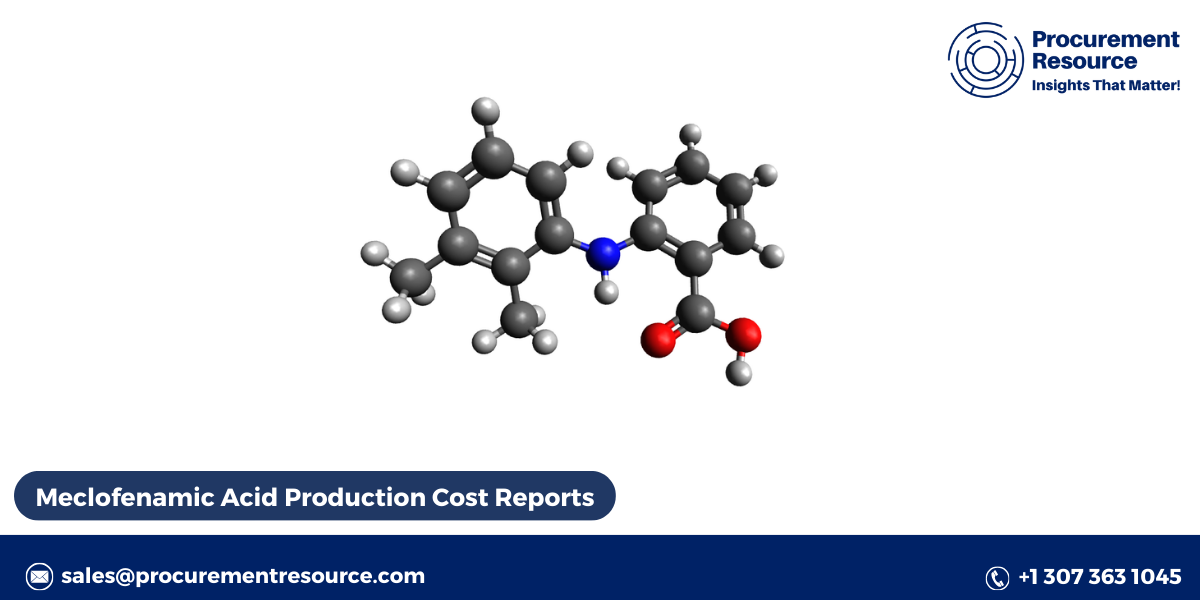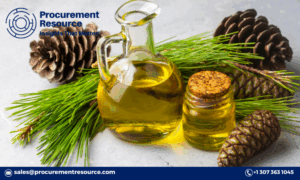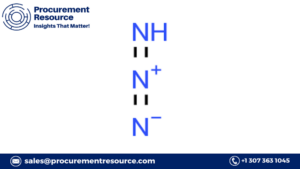
Meclofenamic acid is a non-steroidal anti-inflammatory drug (NSAID) widely used to relieve pain and inflammation. It belongs to the fenamate group of NSAIDs, closely related to other drugs like mefenamic acid. Meclofenamic acid works by blocking enzymes involved in the body’s inflammatory processes, reducing swelling and pain.
This blog covers the production process of meclofenamic acid, its uses, structure, and the potential side effects associated with its use.
Production Process of Meclofenamic Acid
The production of meclofenamic acid typically involves several chemical reactions that convert raw materials into the final product. Here’s an overview of the key stages in the production process:
1. Starting Material Synthesis
- The process begins with the selection of base chemicals, such as aniline derivatives. These derivatives undergo nitration to introduce a nitro group, which is crucial for subsequent steps.
2. Reduction Reaction
- The nitro group is reduced to form an amine group, making it reactive for further chemical modification.
3. Acylation Reaction
- The acylation process introduces a carboxylic acid group to the molecule. This is typically achieved through a reaction with acyl chlorides or carboxylic acids, depending on the desired outcome.
4. Cyclization Process
- Cyclization forms the fenamate ring structure characteristic of meclofenamic acid. This step is essential to give the compound its anti-inflammatory properties.
5. Purification and Crystallization
- After synthesis, the product is purified to remove impurities and by-products. Crystallization helps in obtaining meclofenamic acid in its pure form. Solvents are commonly used for crystallization, yielding the final product in solid form.
6. Drying and Quality Control
- The crystalline form is dried to remove any residual solvents and then undergoes rigorous quality testing. Quality control ensures that the product meets the required standards for pharmaceutical use.
Uses of Meclofenamic Acid
Meclofenamic acid is prescribed for various medical conditions due to its ability to reduce pain, fever, and inflammation. Common uses include:
- Pain Relief: Effective in treating mild to moderate pain, including dental pain, muscle pain, and joint pain.
- Arthritis Treatment: Often prescribed for conditions like rheumatoid arthritis and osteoarthritis, where inflammation contributes significantly to symptoms.
- Menstrual Cramps: Provides relief from menstrual pain by reducing inflammation in the uterine lining.
Meclofenamic acid should only be used under a doctor’s supervision, as it can interact with other medications and is not suitable for all patients.
Structure of Meclofenamic Acid
Meclofenamic acid is a fenamate NSAID with a chemical structure that includes a phenyl ring and a carboxylic acid group. Its chemical formula is C14H11Cl2NO2, with a molecular weight of 296.15 g/mol. The molecule contains two chlorine atoms, which contribute to its anti-inflammatory properties by enhancing the compound’s reactivity with inflammatory enzymes.
This structure is similar to other NSAIDs in the fenamate group, but small differences in the molecular arrangement make each drug unique in its effectiveness and side effects.
Meclofenamic Acid Side Effects
As with most NSAIDs, meclofenamic acid has potential side effects. These can range from mild to severe, and users should be aware of them before starting treatment. Common side effects include:
- Gastrointestinal Issues: Nausea, vomiting, and indigestion are common side effects. More severe issues, like stomach ulcers or bleeding, may also occur.
- Kidney Effects: Long-term use can lead to reduced kidney function, especially in individuals with preexisting kidney conditions.
- Cardiovascular Risks: There is a risk of increased blood pressure and other heart-related issues, particularly with prolonged use.
- Allergic Reactions: Skin rashes, itching, and swelling can occur in those with sensitivity to NSAIDs.
It’s crucial to consult a healthcare provider if any side effects occur or persist. Some side effects may lessen over time, but serious reactions require immediate medical attention.
Meclofenamic acid plays a vital role in managing pain and inflammation, particularly for those suffering from chronic conditions like arthritis. Its production involves a series of chemical reactions, each crucial in forming its structure and ensuring its efficacy. However, like any medication, it carries the risk of side effects, so it is best used under professional guidance. Understanding the uses, production process, and potential risks of meclofenamic acid can help patients make informed decisions about their treatment options.
Contact Us:
Company Name: Procurement Resource
Contact Person: Endru Smith
Email: sales@procurementresource.com
Toll-Free Number: USA & Canada - Phone no: +1 307 363 1045 | UK - Phone no: +44 7537 132103 | Asia-Pacific (APAC) - Phone no: +91 1203185500
Address: 30 North Gould Street, Sheridan, WY 82801, USA






